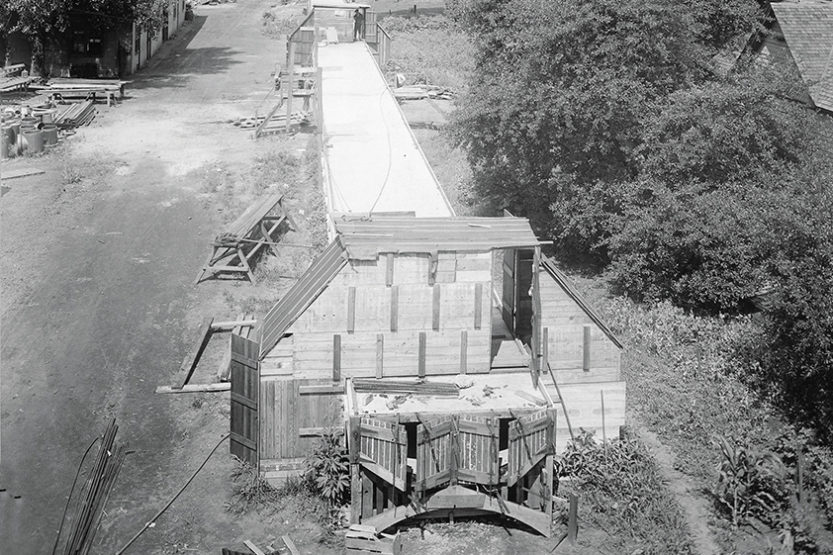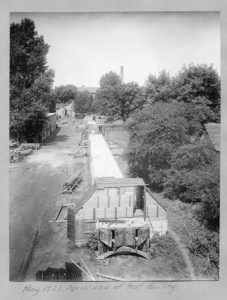Ingenious: Indoor air quality
 Before he became University president, UI professor Arthur C. Willard designed the ventilation system used in the famous Holland Tunnel, built to connect New York City and New Jersey. (Image courtesy of UI Archives)
Before he became University president, UI professor Arthur C. Willard designed the ventilation system used in the famous Holland Tunnel, built to connect New York City and New Jersey. (Image courtesy of UI Archives) The world had not seen anything like it before.
It was the 1920s and transportation planners had decided to build a tunnel directly below the Hudson River, connecting New York City with New Jersey. At the time, it would be the world’s longest vehicular tunnel—roughly 8,500 feet long (more than a mile-and-a-half).
Some called the Holland Tunnel a staggering engineering achievement—a modern marvel. But as plans were made, the big project stirred big fears. Would the accumulated exhaust of thousands of cars suffocate motorists caught in traffic jams in the middle of the tunnel? This was unknown territory.
To ensure air safety, planners decided that the tunnel would be the first to have a ventilation system “specifically designed to accommodate motor-vehicular traffic,” said Robert W. Jackson in Highway Under the Hudson. For help on the new air system, Clifford M. Holland, the tunnel’s engineer, looked to three research institutions, including the University of Illinois.
UI was home to Arthur C. Willard, HON ’46, a professor of mechanical engineering and renowned authority on ventilation. Willard would go on to become UI president from 1934-46. The local airport in nearby Savoy, Ill., is named after him. But his name also is forever linked to the Holland Tunnel.
In early 1921, the UI Engineering Experiment Station, under Willard’s guidance, constructed an aboveground model of the future Holland Tunnel. The huge tube, the length of a football field, snaked along Harvey Street two blocks northeast of the UI engineering campus. There, Willard’s team conducted experiments to determine how much power would be needed to propel the fans ventilating the Holland Tunnel.
The goal was to keep carbon monoxide levels below 4 parts per 10,000.
When the Holland Tunnel opened on Nov. 13, 1927, an estimated 50,000 cars drove through it. Some people drove through the tunnel four times that day and cars would emerge honking horns, the New York Herald Tribune reported. It was like a new thrill ride.
“The ventilation system is particularly wonderful,” one chauffer told the newspaper. “Fresh air is poured into the tunnel 42 times an hour. Imagine, 42 times an hour!”
According to the New York Herald Tribune, “Occupants of the cars sniffed speculatively as they entered the tunnel, but quickly pronounced the air healthy and crisp.” News reports even claimed that the air quality inside the tunnel was better than on some New York City streets.
Sources: the New York Herald Tribune, Nov. 14, 1927; the New York Evening Post, Nov. 14, 1927; The Daily Illini, Jan. 26, 1921; Highway Under the Hudson, by Robert W. Jackson; and the University of Illinois Archives


